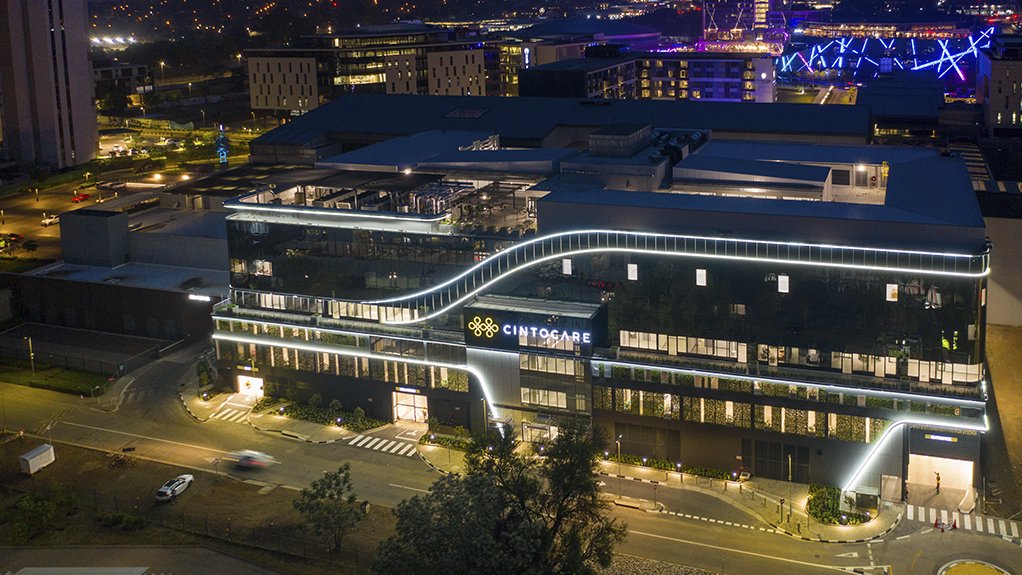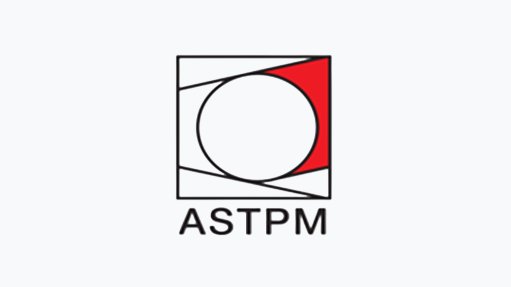Hospital benchmarks in sustainable healthcare facilities


CINTOCARE HOSPITAL Zutari provided design and construction supervision for the hospital build
Consulting engineering and infrastructure advisory firm Zutari provided design and construction supervision of the mechanical services, as well as environmentally sustainable design (ESD) consulting, at the new Cintocare Hospital in Menlyn Maine, Pretoria.
It is the first Green Star South Africa Custom Healthcare-certified hospital in South Africa and in Africa. “The brief from developer Growthpoint was that Cintocare must set a new benchmark for sustainable design, construction and operation of a healthcare facility,” comments Zutari ESD consulting and project management associate Yovka Raytcheva-Schaap.
In a collaborative effort between Growthpoint, architecture firm A3 Architects and the Zutari professional team, a design was conceived that expressed the purpose of the building as a modern, hi-tech medical-care facility with sustainability features that were artistically and seamlessly integrated. Examples include the high-performance double-glazed façade, water-efficient greenery in and outside the building, high-efficiency light-emitting diode lighting, extensive glazing connecting to the outdoor environment and ample natural daylight. All of these elements contribute to the positive experience of the staff, patients and visitors, notes Raytcheva-Schaap.
The medical requirements were directed by a highly-specialised team of surgeons, medical staff and technical managers from Cintocare, supported by national and international regulations and guidelines, as well as best practice. Interestingly, the hospital was never intended to have an emergency department, but rather to create a healthcare facility that would allow leading-edge procedures using the latest technology.
Commenting on the importance of Zutari’s ESD consultancy on this project, Raytcheva-Schaap explains that the main aim of healthcare facilities is patient treatment and recovery, which places a high demand on resources when compared to other buildings.
“As responsible citizens, we recognise the major challenges of our times, some of which relate to public healthcare and climate change.”
The development of this facility was carefully considered along these lines. Decisions related to sustainability and occupant well-being were made intrinsically in response to these major challenges. While the unobstructed large window areas provide excellent views, these also increased the radiant heat load and glare. High-performance glazing was modelled in advance so that the most ideal glazing and screening could be selected.
Water is essential for the operation of a building of such nature. Design interventions were introduced to optimise water use as much as possible. These include a 60 m3 storage tank for rain-harvested water used for toilet flushing and car washing, as well as water-efficient fittings in all staff, patient and public ablutions.
Any building requires shafts for vertical reticulation of services. However, this type of building, with its multitude of integrated critical services, including medical gas, machine data and hot water reticulation, called for 3D design and coordination in order to optimise the space utilisation in shafts.
“This was a groundbreaking work for the entire project team. Hospitals and their associated building services are more complex in comparison to commercial buildings. There are life-critical systems that cannot be compromised. Given that, we had to plan and design carefully to achieve the necessary energy and water performance to meet the rating goals. It was a steep learning curve for the entire team. However, the project has been hugely rewarding and sets a sustainability standard for other healthcare facilities to follow,” Raytcheva-Schaap concludes.
Article Enquiry
Email Article
Save Article
Feedback
To advertise email advertising@creamermedia.co.za or click here
Comments
Press Office
Announcements
What's On
Subscribe to improve your user experience...
Option 1 (equivalent of R125 a month):
Receive a weekly copy of Creamer Media's Engineering News & Mining Weekly magazine
(print copy for those in South Africa and e-magazine for those outside of South Africa)
Receive daily email newsletters
Access to full search results
Access archive of magazine back copies
Access to Projects in Progress
Access to ONE Research Report of your choice in PDF format
Option 2 (equivalent of R375 a month):
All benefits from Option 1
PLUS
Access to Creamer Media's Research Channel Africa for ALL Research Reports, in PDF format, on various industrial and mining sectors
including Electricity; Water; Energy Transition; Hydrogen; Roads, Rail and Ports; Coal; Gold; Platinum; Battery Metals; etc.
Already a subscriber?
Forgotten your password?
Receive weekly copy of Creamer Media's Engineering News & Mining Weekly magazine (print copy for those in South Africa and e-magazine for those outside of South Africa)
➕
Recieve daily email newsletters
➕
Access to full search results
➕
Access archive of magazine back copies
➕
Access to Projects in Progress
➕
Access to ONE Research Report of your choice in PDF format
RESEARCH CHANNEL AFRICA
R4500 (equivalent of R375 a month)
SUBSCRIBEAll benefits from Option 1
➕
Access to Creamer Media's Research Channel Africa for ALL Research Reports on various industrial and mining sectors, in PDF format, including on:
Electricity
➕
Water
➕
Energy Transition
➕
Hydrogen
➕
Roads, Rail and Ports
➕
Coal
➕
Gold
➕
Platinum
➕
Battery Metals
➕
etc.
Receive all benefits from Option 1 or Option 2 delivered to numerous people at your company
➕
Multiple User names and Passwords for simultaneous log-ins
➕
Intranet integration access to all in your organisation


















